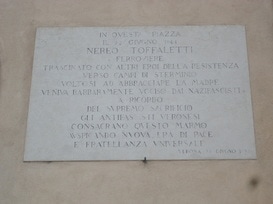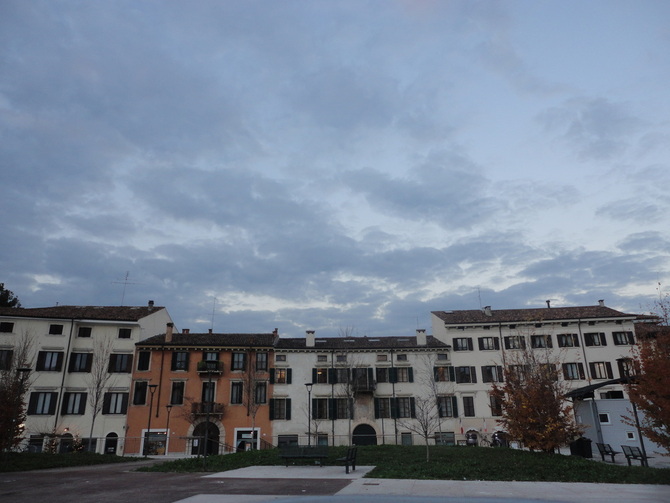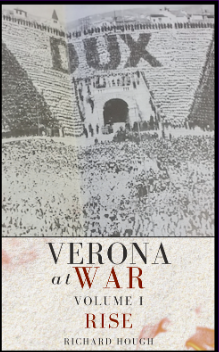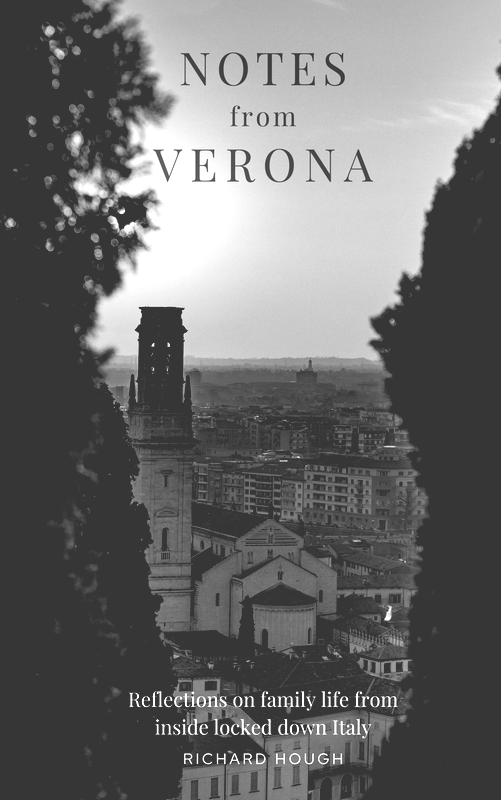|
A new teaching assignment at Verona’s Istituto Seghetti brings me to Piazza Cittadella.
After the lesson, I make my way across the square to Bar Colombus, a bright, elegant bar that doesn’t seem to have changed much in 70 years. With waiters dressed in the traditional attire of their profession, it retains the warmth and charm of bygone age and boasts a mouth-watering selection of pastries and panini, which, even at this late stage in the afternoon, look fresh and appetising.
Located to the south of Piazza Bra, just off Corso Porta Nuova, Piazza Cittadella takes its name from the ancient fortress that once stood here. The citadel, or fortress, was demilitarized in 1535 and the area was redesigned by the renowned Veronese architect Michele Sanmicheli.
Following a major car park redevelopment, Piazza Cittadella is once again beginning to discover a sense of purpose. While it lacks the character or beauty of Verona’s principal piazzas, a number of bars, theatres and schools, not to mention the car park itself, make this a busy hub for students and commuters to the city centre. Aside from the tourist information office, however, there is little of obvious interest to the passing tourist. But, if you look close enough, this unassuming piazza has some dark stories to tell.
On a building next to the bar, a plaque on the wall records that on 17 November 1918 one Andrea Luigi Paglieri was born here. Paglieri was a professor of law and political science. During the Second World War he was a lieutenant in the 5th Regiment "Lancers of Novara". He was awarded the Silver Medal, the Iron Cross II Class and the Military Cross for bravery.
After the 1943 armistice with the Allies, Italy was effectively fighting three wars - a war of liberation from the Nazis; a civil war against the Repubblica Sociale Italiana and an ideological war between the forces of fascism and communism. Paglieri joins the resistance. He stays with his family in Fossano, a small town in the northwest corner of Italy, from where he leads his comrades in prison raids and numerous acts of sabotage.
Nereo Toffaletti was a young railwayman from Verona. During the German occupation, many dissident railroaders engaged in acts of industrial boycott. The Germans realised what was happening and, on 22 June 1944, rounded-up and captured many of the dissidents. Nereo Toffaletti was amongst those herded together in Piazza Cittadella, to be sent to concentration camps in Germany. As he was being led away, he turned to embrace his mother.
For this gesture of defiance he was shot on the spot by a fascist guard. A marble plaque on the building next to the Istituto Seghetti marks the spot where the young railwayman was killed. On 1 August 1944, Andrea Paglier was taken prisoner by the Black Brigades. For ten days he was brutally tortured and beaten. With his mouth ripped open, he was paraded through the streets of Fossano and forced to pass in front of his own house. Afterwards, he wrote the following note: Dear mother, [I'm writing badly because I’m handcuffed] but I assure you that I do not suffer and that I have never suffered. I am glad I saw you this morning in the garden and that you did not see me: so you didn’t see my pain. Thanks for all you have done for me and I apologize for all the sorrows that I have caused.
On 9 August 1944, Andrea is shot by firing squad.
The street leading to Piazza Cittadella now bears his name - via Andrea Paglieri.
Back in Bar Columbus, I finish my coffee. Dusk is falling as I walk back across the piazza towards my bike.
|
AboutRichard Hough writes about history, football, wine, whisky, culture + travel and is currently working on a trilogy about wartime Verona.
|









